Introduction
In this post, I will introduce you to the 7 elements of art! Heard of that already? Keep reading…
I don’t know if you did it too, but you might have wondered at least once, how some viewers get absorbed in a deep observation of paintings and artworks and figure out their meaning.
Much to my amazement, I understood that they analyze the intentionally utilized art elements in paintings. In this regard, your job as an artist is to know how to use these art elements to guide the viewer towards a deeper mutual understanding of your work.
What are the 7 art elements?
- Line
- Shape
- Form
- Space
- Value
- Color
- Texture
Why care about the 7 art elements?
Artists have their own way of displaying their art and the message they want to deliver. I personally consider painting my most effective way of communication, and this is exactly what the 7 elements of art are for! They are the stylistic features of an art piece that help you build the message behind your art.
1-The first element of art: Line
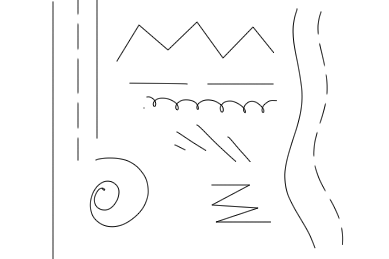
Well! Let’s start with the most basic art element: The line
Although this might seem easy and pretty basic, in art it’s very tricky and substantial. The line is one of the most crucial art elements, as everything begins with just a simple dot in space, which transforms into lines and then drawings. Lines are everywhere!
This is the line we were taught in school:
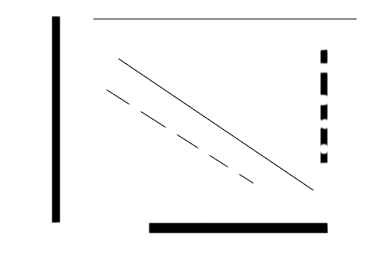
And this is the line in art!
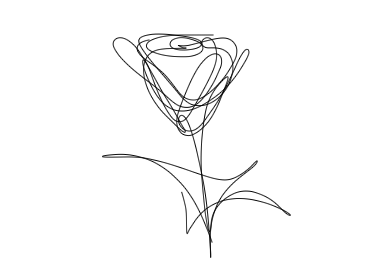
Magic, right?
Let’s break this art element down:
What are the different types of lines?

What are the different weights of lines?
Line variations refer to width, weight, length, and style. Variating the weight of lines can capture energy, and movement and represent elements of perspective.

Some artists create contour lines using the same width line, while others change the width to give more energy and volume suggestions.
-A drawing using the same width line:
-Different width line drawing example:
How to use lines in Art?
Contour line:
Lines are mainly used for contour and sketching in art. Using lines, you can draw yourself a path to follow.
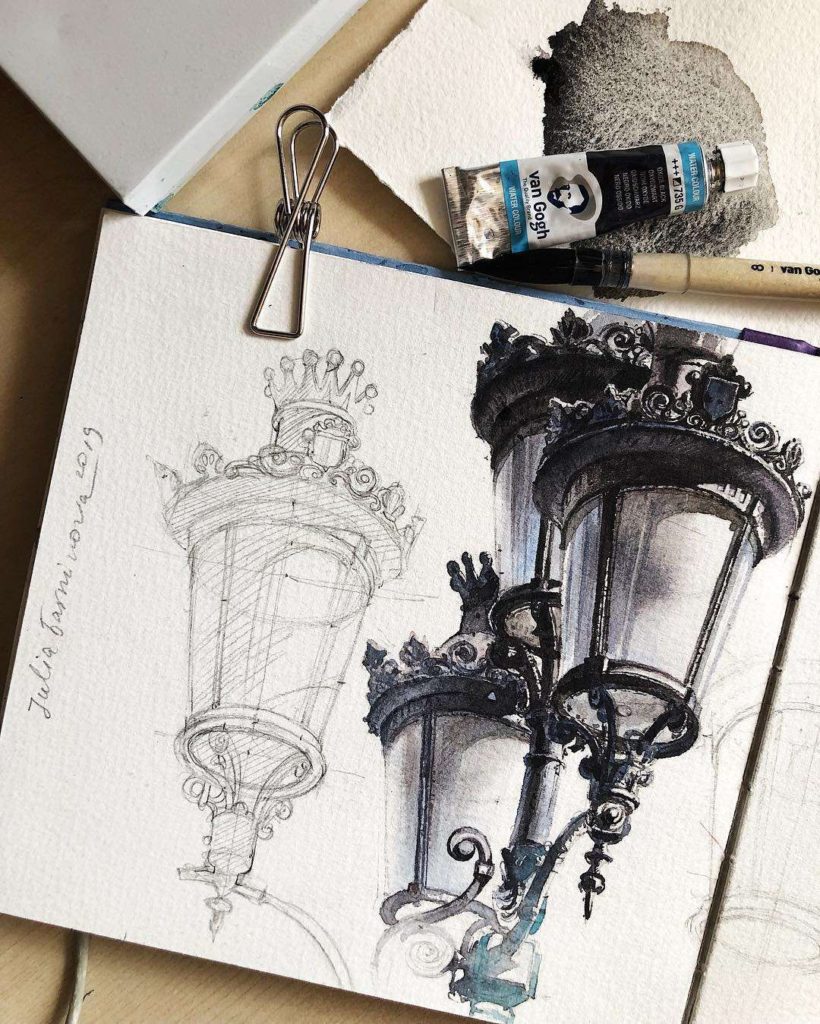
Continuous lines:
A continuous line that defines the outline of a shape. They can exist outside and inside a shape or a figure, and are often referred to as line art.
Outline:
Outlining a drawing means using lines to suggest the contour of a certain subject.
Blind contour:
Contour refers to the lines making the outer shape of a drawing. In order to make a blind contour artwork, you need to draw with one continuous line without looking at the paper.
This was a general look at the element of art: Line.
Let’s move on to the next element of art which is: shape.
2- The second element of art: Shape
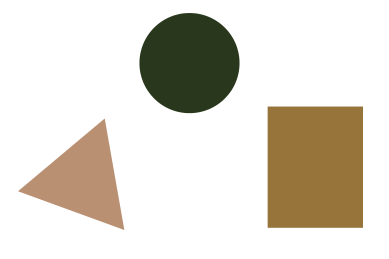
I can simply explain this by referring to the “2D” flat shapes we learned in geometry.
But just so you know, there are geometric and organic shapes.
Geometric:
The sharp-edged shapes except for circles and spheres.
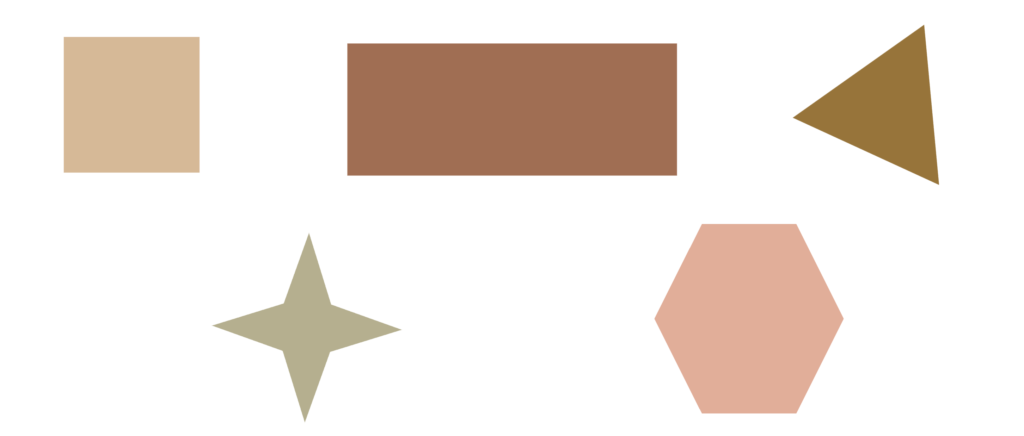
Organic:
The shapes as exist in nature, free edges, softer, curvier, and lighter.
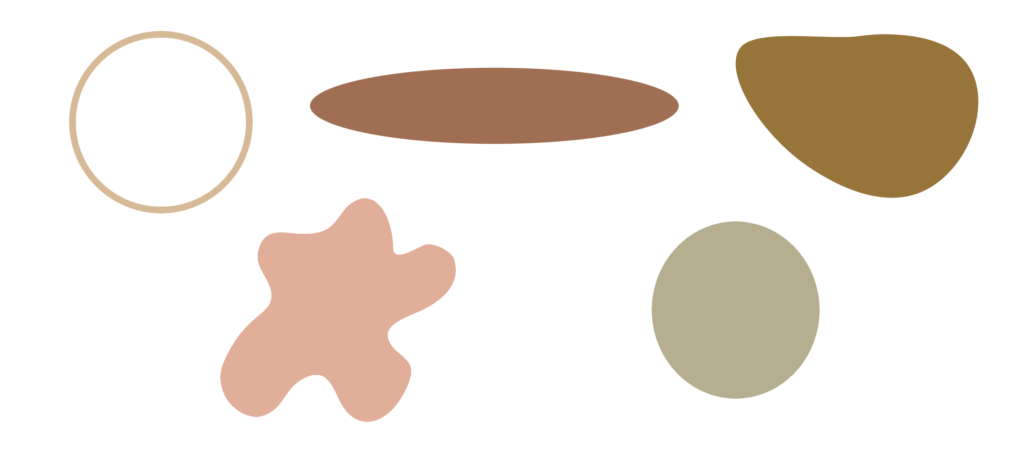
Every drawing, painting, design, work of art of any nature, starts with basic shapes. Cutting any object down into a geometric or organic shape will help you memorize it and thus create it with no reference.
3- The third element of art: Form
This art element, as we’ve seen with the shapes, serves the exact same purpose but with more depth.
Form is the three-dimensional appearance of an object or body; in other words, the spatial area it inhabits. Form is more difficult to draw than shape because of the problems of representing three dimensions on a flat surface. To make our representations realistic, we have to find ways of expressing shapes coming towards the viewer or receding from the viewpoint.
The artist has to experiment both in seeing and drawing in order to come to an understanding of the language of shape and form and how to manipulate it.
4- The fourth element of art: Space
Now as we arrive at the space element, this is where the artist draws the attention of the viewer in the artwork.
The space art element gives value to the shape and highlights depth where it’s needed.
One can notice two types of space:
Positive space:
Areas of focus. What do you want people to see at first glance?
Negative space:
Space around the areas of focus (background).
5- The element of art: Value
Much to our interest, value here doesn’t refer to the worth of the artwork in USD or MAD, but actually to the brightness or darkness of a certain object.
This art element defines how light or dark a given color or hue can be. Values are best understood when visualized as a scale or gradient, from dark to light.
Value scales:
The two value scales are low and high contrast. As you observe the following examples you’ll be able to spot the difference between both. Let’s start with low contrast:
Low contrast
The more tonal variants in an image, the lower the contrast. When shades of similar value are used together, they also create a low contrast image.
High contrast
High contrast images on the other hand have few tonal values in between stronger hues like black and white.
Value is responsible for the appearance of texture and light in art. Although paintings and photographs do not often physically light up, the appearance of light and dark can be achieved through the manipulation of value.
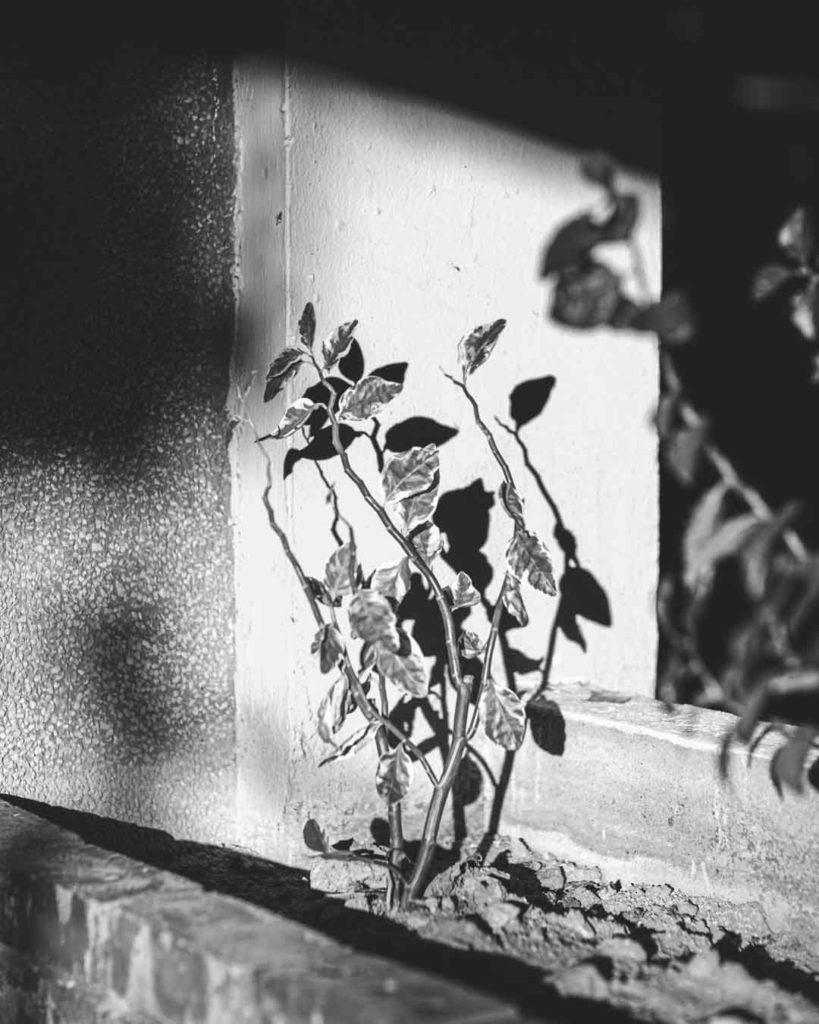
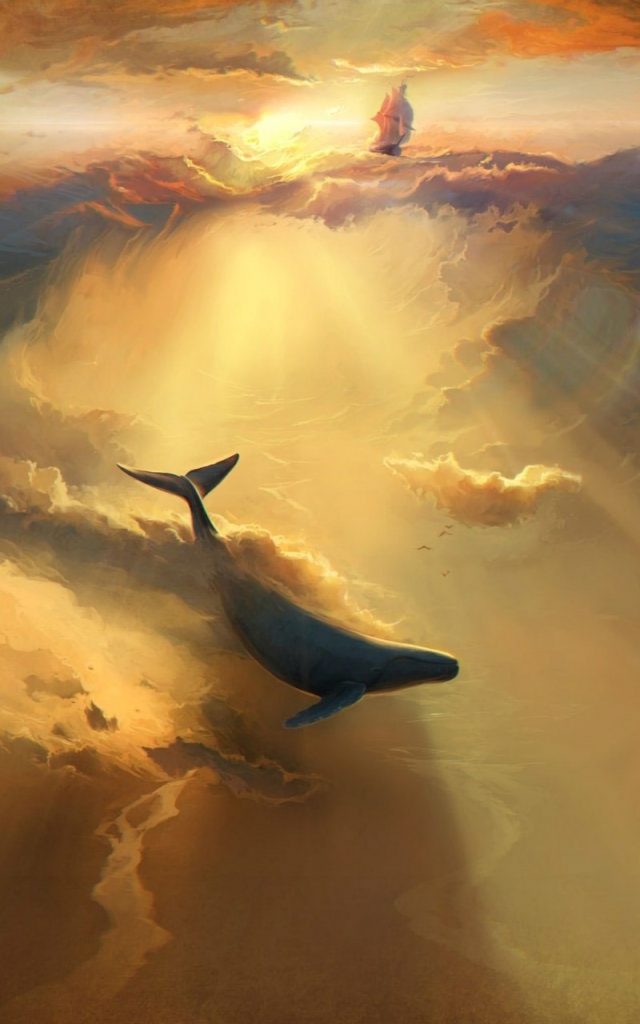
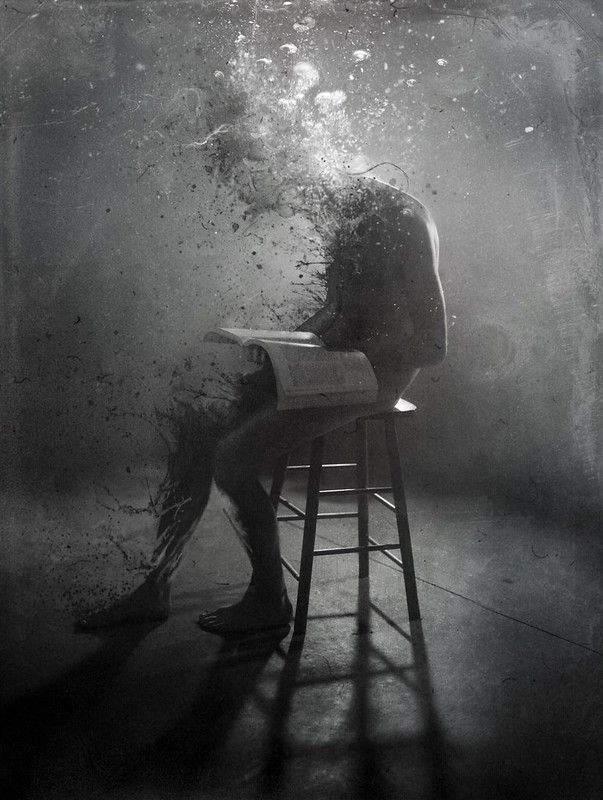
6- The element of art: Color
We’re finally at my favorite element of art, I LOVE COLOR.
Let’s bring in a little bit of science! What is color?
We’ve all been taught that color is the reflection of light in our eyes transmitted to our brains so we know we’re looking at a color.
Color as an element of art is : hue + saturation + value.
Hue:
The name of a color: red, blue, green…
Saturation:
How bright or dull a color is (or how saturated). A color’s purity/brightness is determined by whether it has been mixed with another hue and, if so, to what extent. The most vibrant paint colors are those straight from the tube. Colors that have been combined with various hues are thought to be less intense.
Value:
It refers to the lightness or darkness of a color. Adding white or black to a hue changes its value. A “tint” is created when white is added, while a “shade” is made when black is added (check the second photo below).
Here are the three together for a better understanding and comparison.
Color is the art element that creates moods, and helps you express an emotion in your artworks which makes it the most powerful art element.
If you wanna know more about color and how to pick a color palette for your next artwork, click here.
7- The element of art: Texture
Texture refers to the surface quality in a work of art. We associate textures with the way things look or feel. Everything has some type of texture. We describe things as being rough, smooth, silky, shiny, fuzzy, and so on.
If an object feels just like it appears, we call it the real or actual texture.
Such as the following example:
If you touch it, it feels soft as well.
The texture in this case is real
If the texture is created to look like what it’s not (looks rough but it’s actually smooth), we call it visual or implied texture: you can see it, but you can’t really feel it.
The other type of texture is the visual or implied texture:
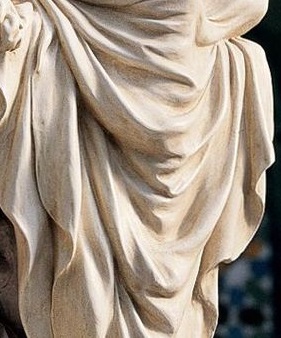
Here, the sculpture looks like satin or silk fabric. When in reality, it is sculpted clay.
This texture is visual or implied, not real.
Texture is a very fun and easy way to make artworks come through, and look unique and alive.
Conclusion:
Let’s summarize this together:
- The 7 art elements are line, shape, form, space, value, color, and texture.
Beyond the 7 elements of art being fun and useful, knowing them will allow you to analyze, appreciate, write and chat about art, as well as be of help if you create art yourself.
Exercise:
Spot 2 art elements in these paintings:
Artwork 1:
Example 2:
Painting 3:
Which art element is your favorite? And how could you combine them all in order to create an amazing artwork? Have you been using art elements to decipher the artworks you like?
Let me know in the comments!



Fantastic goods from you, man. I’ve understood your stuff
previous to and you’re just too magnificent.
I really like what you’ve acquired here, what you are stating, and the way in which you say it.
You make it entertaining while still taking care of keeping it smart.
I can not wait to read far more from you. This is really a wonderful site.
I’m no longer positive where you’re getting your information, however great topic. I needs to spend some time studying more or figuring out more. Thank you for wonderful information I was on the lookout for this info for my mission.|